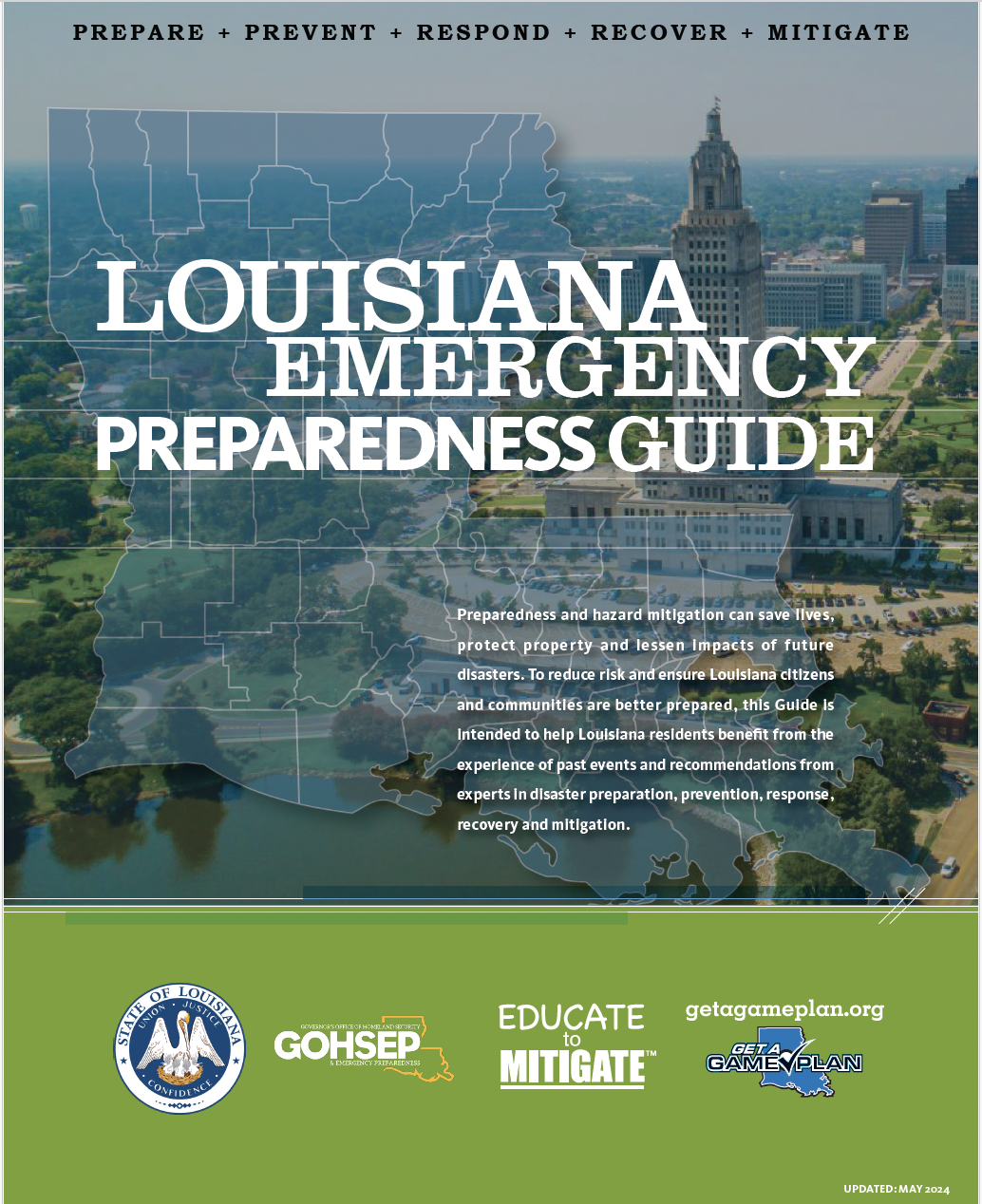
Hurricane season can be a challenging time for ALICE families. Still, there are affordable ways to prepare and ensure your safety. Start by creating a simple emergency kit with essentials like water, non-perishable food, a flashlight, and first aid supplies—many of which can be sourced on a budget.
Ready SWLA: Smart Prep for Real Life
Make a family communication plan, and practice it together so everyone knows what to do when a storm approaches. Utilize community resources and workshops that offer free or low-cost preparedness training, helping you stay informed and ready without straining your finances. Remember, preparedness doesn’t have to be costly; it’s about planning and making wise choices to safeguard your loved ones.
Residents can register online at UNITEDWAYSWLA.ORG/STORM or text “STORMSWLA” to 40403 to receive real-time updates from trusted sources before, during, and after a hurricane.
Ready.gov has up-to-date information such as this Family Communications Plan Form.
- Make sure you store important phone numbers somewhere other than just your cell phone
- Sign up for emergency alerts in your area to receive life-saving information from state and local officials
- Build your EMERGENCY SUPPLY KIT over time instead of just when a disaster strikes and locate it all in a safe area
- Store important documents and paperwork together in water-tight plastic storage bags (available at United Way)
- Use United Way's 211 helpline by dialing 211 or online to find resources before, during and after a crisis
Download the LA Emergency Preparedness Guide
Free Mental Health Sources
Dial 211 to be transferred to a live counselor 24/7
Visit CRISIS CHAT ONLINE to message with a live counselor 24/7
Teens can use our specialized 833.TXT.TEEN (833.898.8336) to text with a live counselor 24/7
Basic Supplies
To assemble your kit store items in airtight plastic bags and put your entire disaster supplies kit in one or two easy-to-carry containers such as plastic bins or a duffel bag.
A basic emergency supply kit could include the following recommended items:
- Water (one gallon per person per day for at least three days, for drinking and sanitation)
- Food (at least a three-day supply of non-perishable food)
- Battery-powered or hand crank radio and a NOAA Weather Radio with tone alert
- Flashlight
- First aid kit
- Extra batteries
- Whistle (to signal for help)
- Dust mask (to help filter contaminated air)
- Plastic sheeting and duct tape in case of shelter-in-place
- Moist towelettes, garbage bags and plastic ties (for personal sanitation)
- Wrench or pliers to turn off utilities
- Manual can opener (for food)
- Local maps
- Cell phone with chargers and a backup battery
Additional Supplies
- Soap, hand sanitizer, disinfecting wipes to disinfect surfaces
- Prescription Medications
- Non-prescription medications such as pain relievers, anti-diarrhea medication, antacids or laxatives
- Prescription eyeglasses and contact lens solution
- Infant formula, bottles, diapers, wipes and diaper rash cream
- Pet food and extra water for your pet
- Cash
- Important family documents such as copies of insurance policies, identification and bank account records saved electronically or in a waterproof, portable container
- Sleeping bag or warm blanket for each person
- Complete change of clothing appropriate for your climate and sturdy shoes
- Fire extinguisher
- Matches in a waterproof container
- Feminine supplies and personal hygiene items
- Mess kits, paper cups, plates, paper towels and plastic utensils
- Paper and pencil
- Books, games, puzzles or other activities for children

